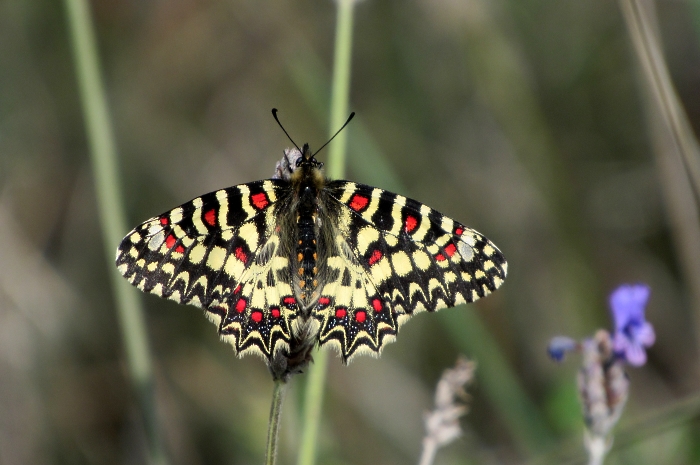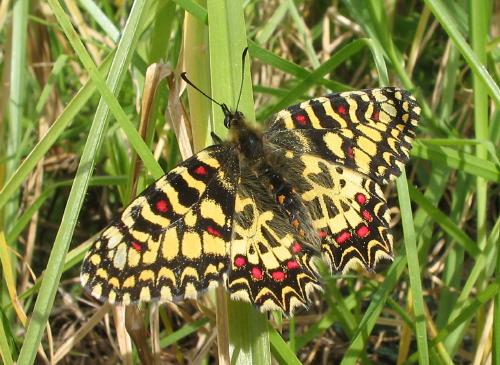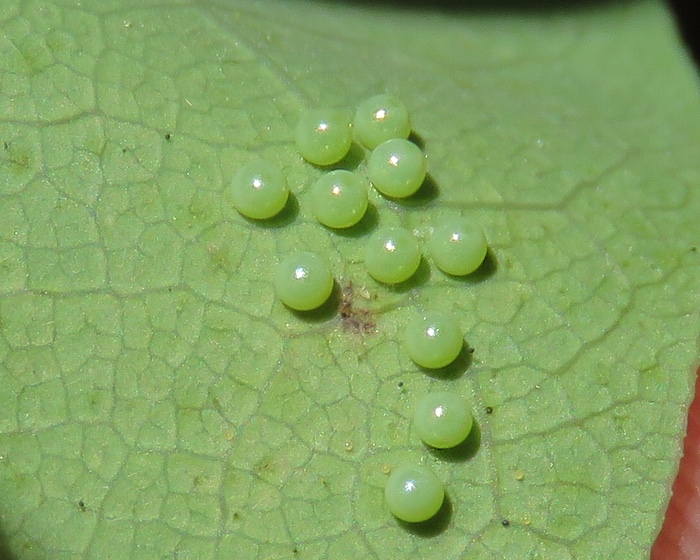
Málaga, February 2017

Málaga, March 2013

Málaga, March 2011

Ronda, March 2011

Málaga, March 2011

Málaga, March 2011

Gibraltar, February 2007

Gibraltar, February 2007

Gibraltar, February 2007

Gibraltar, February 2007

Gibraltar, February 2007

Gibraltar, February 2007

Gravid female, Gibraltar, April 2019

Laying eggs beneath a leaf of the foodplant, in half-shade,
Gibraltar, April 2019

Eggs, Gibraltar, April 2019

A young caterpillar, Gibraltar, April 2019

Typical habitat near Málaga

The foodplant - Aristolochia baetica (the
butterfly also takes other species of Aristolochia)

The Spanish festoon is a wonderfully exotic butterfly
close-up, though
in flight its colours blur into a buttery mixture of all the shades on
its wings and it looks much less brilliant. I first saw the species in
early February, 1983, when I arrived in Gibraltar for my gap year
between school and university. On that first day, as soon as I had
unpacked, I headed off for a walk up the Rock and was thrilled to see
Spanish festoons on the southern slopes. To this day I think of my year
in Gibraltar every time I see one.













